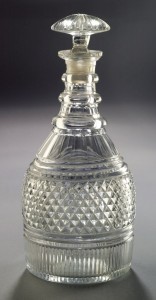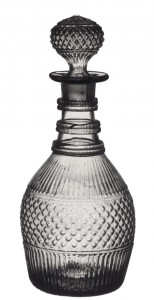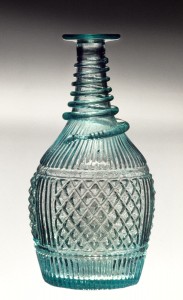[Wine having gone slightly too yellow requires the addition of] a pint of milk and fish-glue to every hundred and fifty quarts, mingled first with a quart of wine, and blended well by beating it up, [it] is then poured into the cask. At the expiration of a few days the wine may be racked off or bottled. . . . Spanish wines have their colour restored by mixing two pounds of starch with eight pints of milk. Let them boil and hour. When cold add a handful of salt; stir it well in, and pour the whole into the cask; agitate the wine for some minutes very forcibly, and then fill and bung up the cask.
Cyrus Redding, Every Man His Own Butler (London, 1839)
A legislative act . . . is required to settle the size of bottles. The consumer often expects, and justly, a wine quart where he only obtains a pint and a half. Fifteen bottles [needed to equal a true] dozen is an abuse too gross to pass much longer without correction.
Cyrus Redding, Every Man His Own Butler (London, 1839)
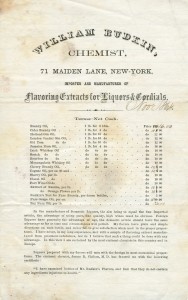 “Flavoring Extracts for Liquors & Cordials” advertisement
“Flavoring Extracts for Liquors & Cordials” advertisement
William Rudkin
New York, New York; November 1864
Joseph Downs Collection of Manuscripts and Printed Ephemera, Winterthur Library Col. 214 74×382.2
Recipes indicate that many merchants and consumers modified lesser-quality alcoholic beverages to improve their taste and, in some cases, their salability. Cyrus Redding, in History and Description of Modern Wines (London, 1833), tells us that
the adulteration of wine . . . has of late become almost a scientific pursuit . . . Balls, races, masquerades, and crowded public dinners, are profitable markets for [such] wines.
New York chemist William Rudkin’s advertisement offers an economical range of supplements not containing “any ingredients injurious to the health.”
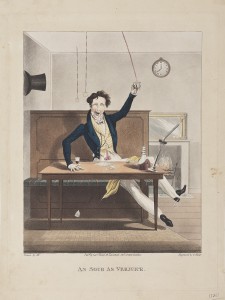
AS SOUR AS VERJUICE
M. Edgerton
London, England; 1825–30
Ink on paper
Museum purchase 1967.199
The young man in the print might have appreciated some taste improvement to his “sour as verjuice” wine. Vinegar-like verjuice, the fermented juice of grapes, apples, or other fruit, was sometimes used for cooking or medicines.
Decanter
England; 1820–30
Glass (lead)
Gift of Mrs. Suzanne C. Hamilton in memory of my mother, Mary Newton Currelly 1985.64.2a,b
Decanter
Probably Massachusetts; 1815–40
Glass (lead)
Bequest of Henry Francis du Pont 1959.3206a,b
Decanter
Probably Vista Alegre Glassworks
Portugal; 1825–40
Glass (nonlead)
Bequest of Henry Francis du Pont 1959.3320
The three decanters shown here illustrate the principle that “imitation is the sincerest form of flattery.” The English lead glass example (left) has costly cut-glass ornament in a fashionable new style. The American (colorless) decanter (center) is also in lead glass but was made using a less-costly process that blows the glass into diamond-pattern molds. The slightly later Portuguese (sea-green) decanter (right) was molded in a similar manner but was made in inexpensive nonlead glass with a simple spiraling glass thread on the neck
Related Themes:

